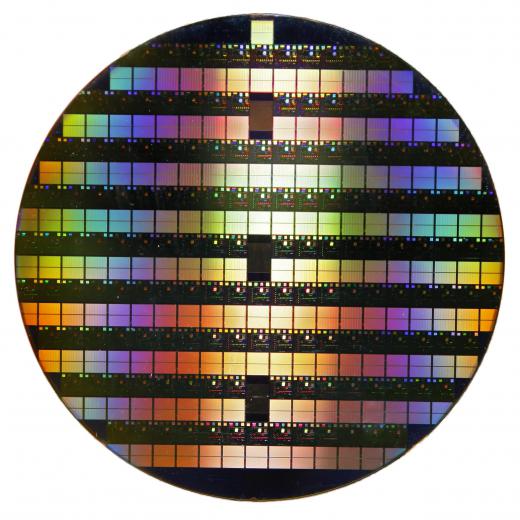Although it may appear that the words silicon and silicone can be used interchangeably, there are some significant differences between them. Silicon is a natural chemical element found in great abundance on Earth, primarily as a major component of common sand. Silicon is generally found in a crystalline form. Silicone is a man-made substance derived from silicon and other chemicals, and it may be a liquid or a rubber-like plastic polymer.
One major difference between silicon and silicone is their commercial use. Pure silicon is an ideal semi-conductor, like the more expensive element germanium. It is possible to heat silicon into a molten state and then form it into wafers. These semi-conductive wafers can then be used as a base for the intricate and microscopic electronic circuitry required for computer processing. This relationship between silicon and the technology industry inspired the nickname for the California high-tech region known as Silicon Valley.

Silicone, on the other hand, is used for a number of other industrial applications. Liquid silicone is often used as a lubricant for machine parts, for example. A thicker form of rubberized silicone can also be used as a waterproof sealant around windows and other gaps. Cured silicone is flexible, moisture-resistant and transparent.
Silicon and silicone are both used to create fireproof or heat-resistant products, but silicon is generally used to create ceramic glazes, glass or bricks while silicone is used to create heat-resistant kitchen aids. Many cooks rely on silicone-based oven mitts, tongs, pot holders and pan handles to prevent burns and scalds. Silicone also possesses non-stick qualities, so it can be formed into flexible cookware such as muffin and cake pans.

Silicone is also chemically inert and considered low in toxicity for humans. This makes it an ideal material for medical prosthetics, most notably as the fluid used to fill prosthetic sacs during breast augmentation surgery. This practice of using silicone as an alternative to saline has become quite controversial in recent years, since a number of patients have reported serious medical complications following the rupture of silicone-filled breast implants.

In short, the difference between silicon and silicone is that silicon is a natural chemical element, while silicone is one of several man-made products derived from silicon. Silicon is generally found in solid crystalline form like sand or glass, while silicone may be a liquid lubricant, a semi-solid adhesive or a rubber-like plastic polymer.
